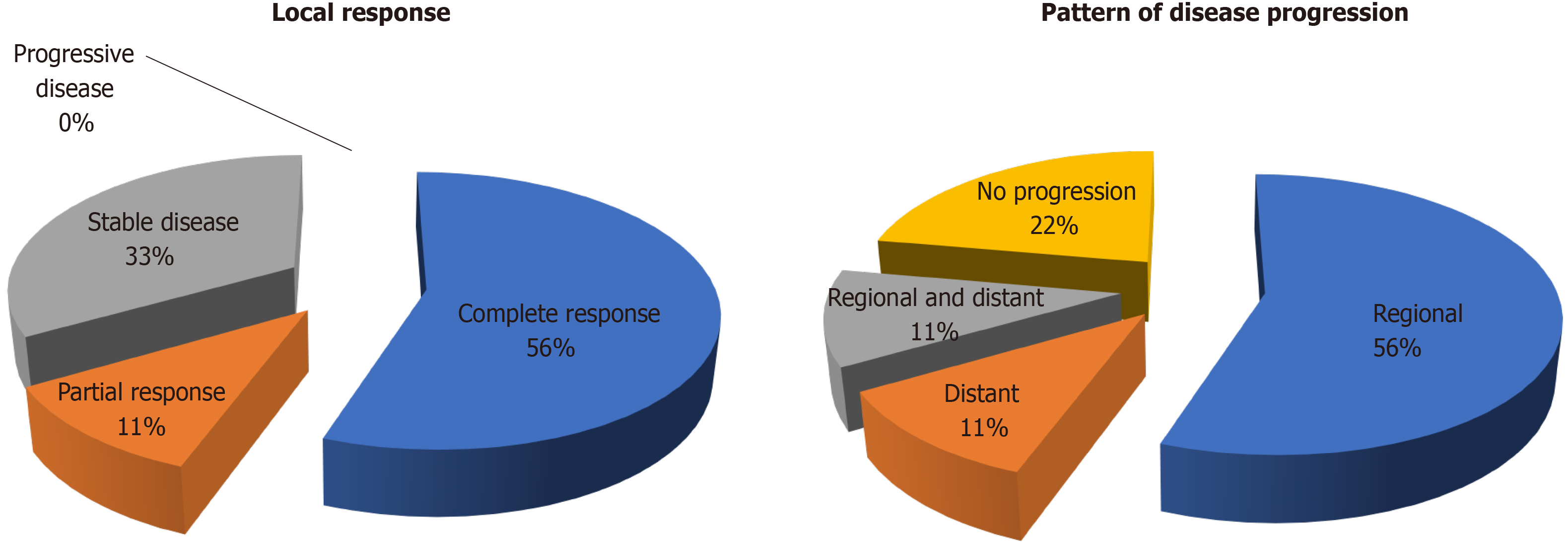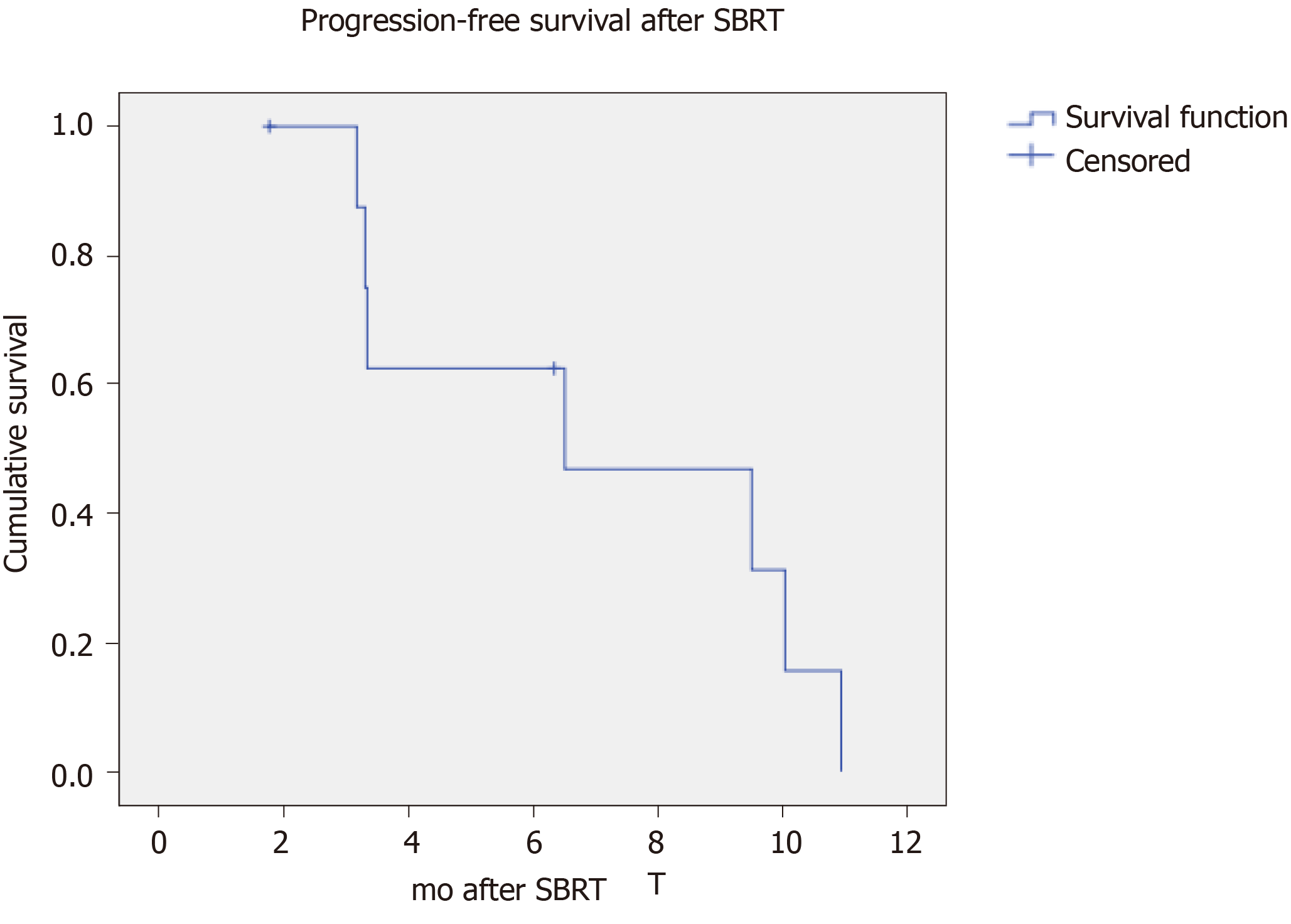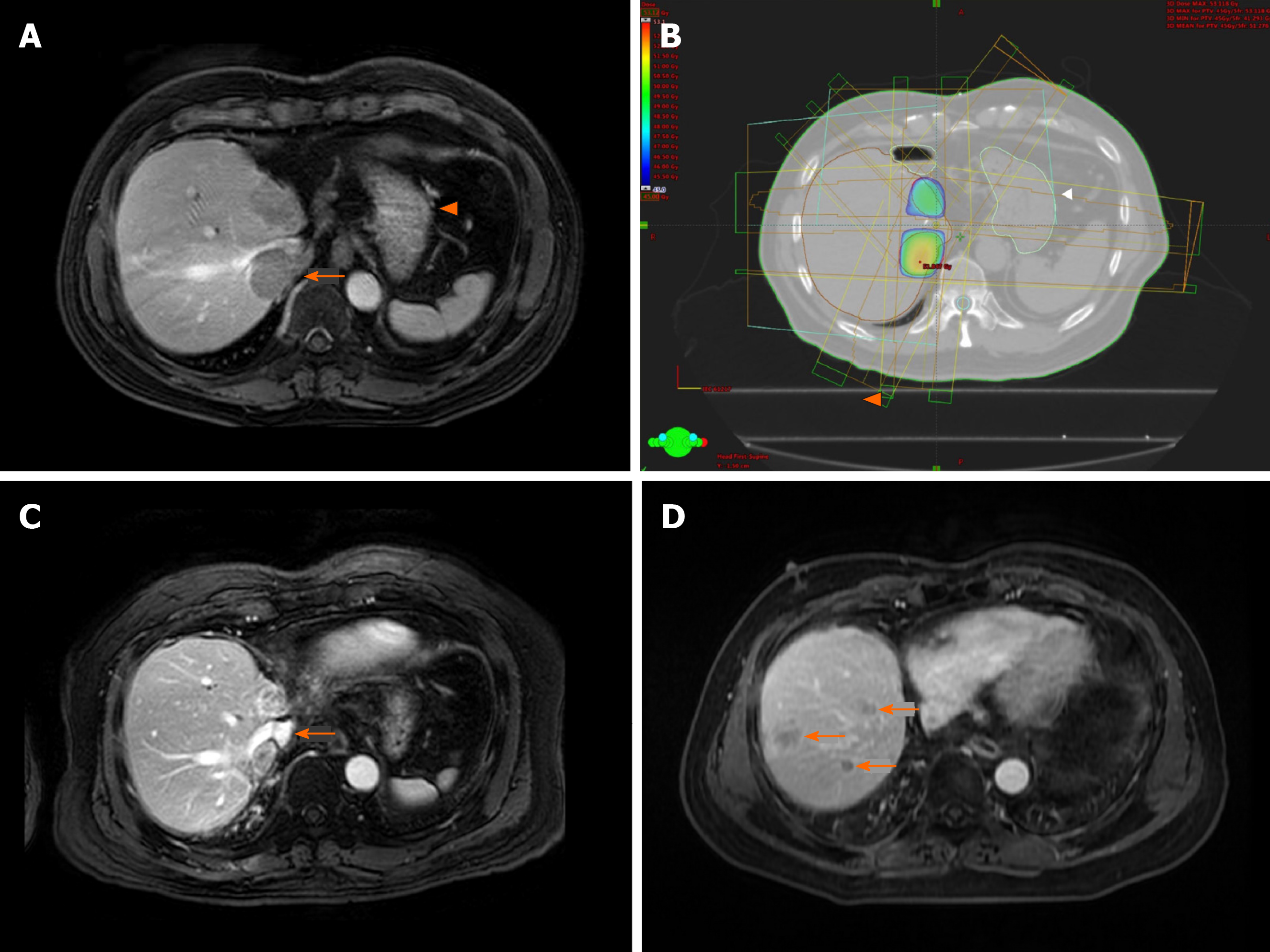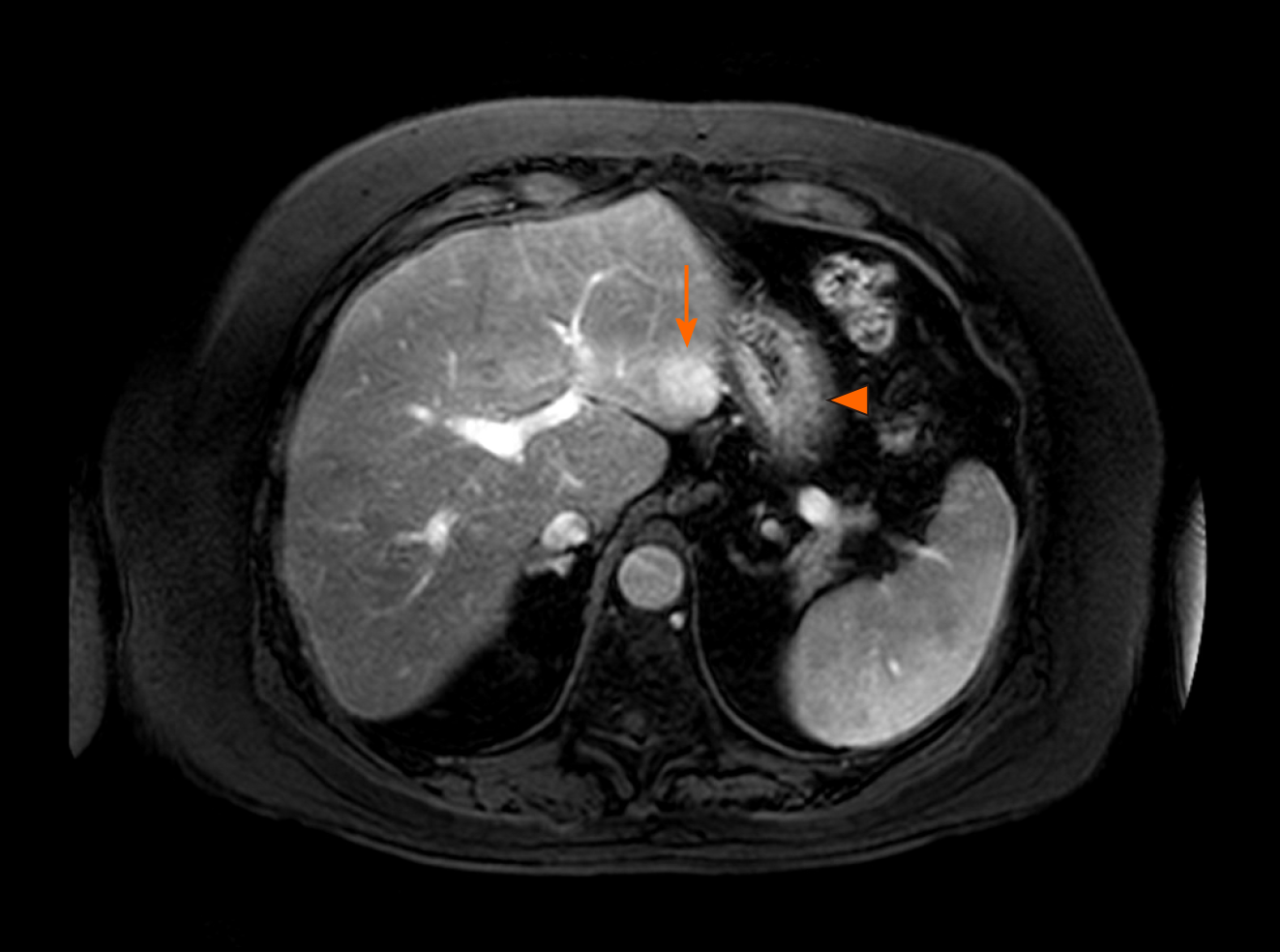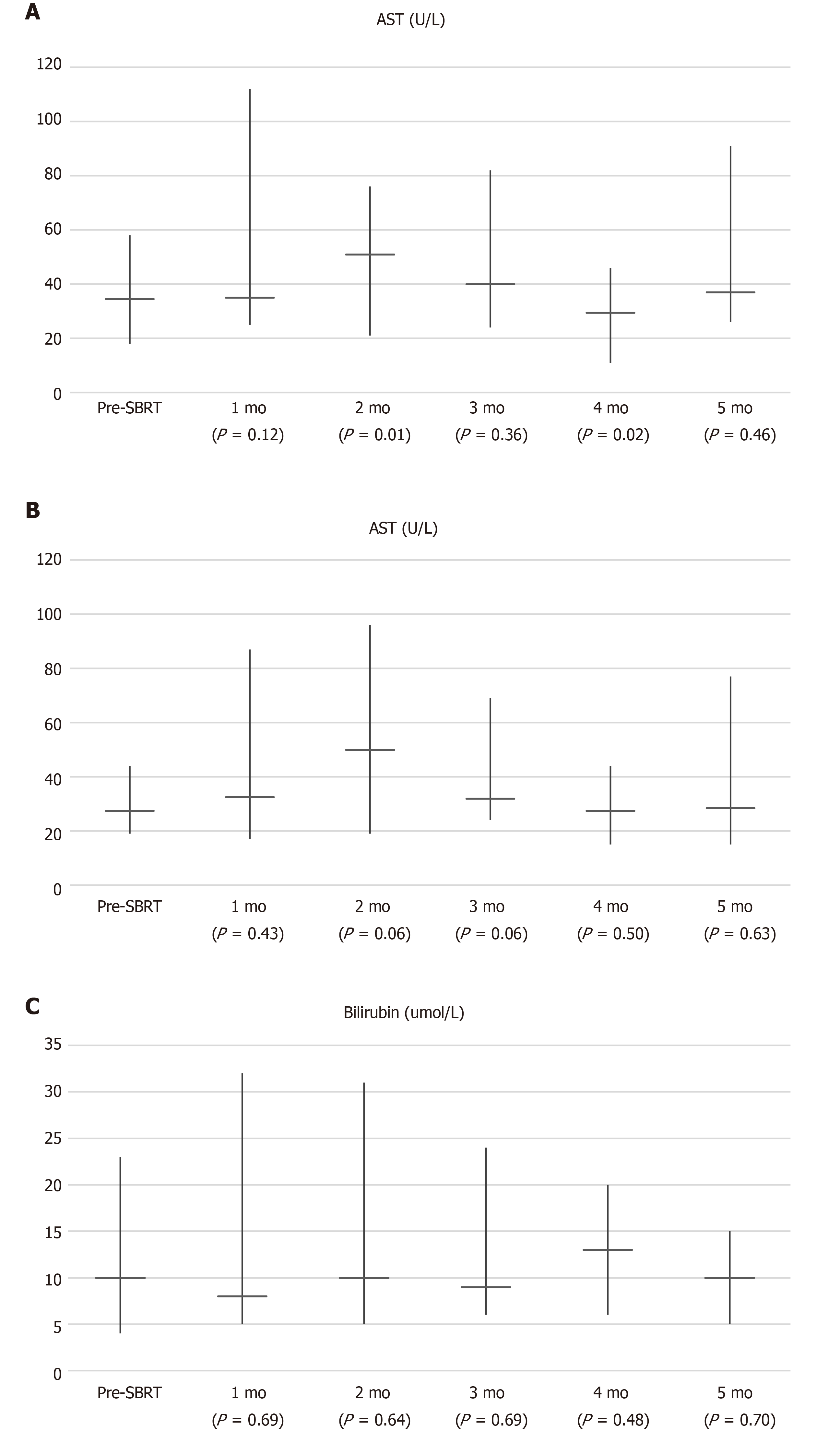Copyright
©The Author(s) 2020.
World J Clin Cases. Jul 6, 2020; 8(13): 2758-2768
Published online Jul 6, 2020. doi: 10.12998/wjcc.v8.i13.2758
Published online Jul 6, 2020. doi: 10.12998/wjcc.v8.i13.2758
Figure 1 Outcomes of stereotactic body radiotherapy.
A: Best local response according the Modified response Evaluation Criteria for Solid Tumours criteria; B: Pattern of disease progression after stereotactic body radiotherapy.
Figure 2 Kaplan Meier curve denoting disease progression-free survival after stereotactic body radiotherapy.
SBRT: Stereotactic body radiation therapy.
Figure 3 Representative images of patient No.
2. A: First recurrence with S7 tumour invading inferior vena cava (arrow: Inferior vena cava tumour thrombus; arrowhead: stomach); B: Stereotactic planning to minimize collateral radiation to the normal liver and stomach (arrowhead); C: S7 and S8 recurrent tumours showed partial response after stereotactic body radiotherapy. Inferior vena cava was re-cannulated (arrow); D: Multifocal intrahepatic recurrences in the graft (arrows).
Figure 4 Patient No.
4 had recurrent hepatocellular carcinoma over S3 (arrow) close to stomach (arrowhead). He developed gastric ulcer necessitating proton pump inhibitor therapy.
Figure 5 Liver function parameters after stereotactic body radiation therapy.
A: Aspartate aminotransferase; B: Alanine aminotransferase; C: Bilirubin.
- Citation: Au KP, Chiang CL, Chan ACY, Cheung TT, Lo CM, Chok KSH. Initial experience with stereotactic body radiotherapy for intrahepatic hepatocellular carcinoma recurrence after liver transplantation. World J Clin Cases 2020; 8(13): 2758-2768
- URL: https://www.wjgnet.com/2307-8960/full/v8/i13/2758.htm
- DOI: https://dx.doi.org/10.12998/wjcc.v8.i13.2758









